| View previous topic :: View next topic |
| Author |
Message |
crowinfocus
Joined: 10 Feb 2023
Posts: 11
Location: Zapata


|
 Posted: Feb 10, 2023 11:28 Post subject: Semi-spherical exterior, radiating interior stone Posted: Feb 10, 2023 11:28 Post subject: Semi-spherical exterior, radiating interior stone |
|
|
I was a young kid looking for arrowheads just outside the small Mexican border town of Zapata, Texas USA when I found the pictured stone. Now 72, I have carried this stone with me, always curious but never knowing what it is. I've asked several geologists over the years, but no one had an answer.
The stone weighs 1.102 oz.
It measures 3.3 cm (exactly) at its widest point.
It has zero magnetic attraction.
All suggestions welcome!
Thank you.
| Mineral: | ? |
| Dimensions: | 3.3 cm |
| Description: |
|
| Viewed: |
15716 Time(s) |
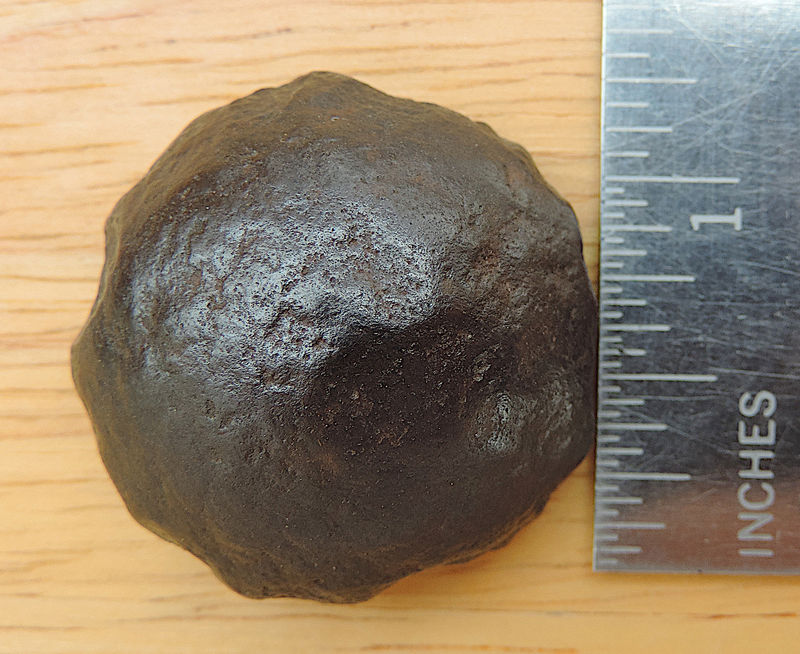
|
| Mineral: | ? |
| Dimensions: | 3.3 cm |
| Description: |
|
| Viewed: |
15718 Time(s) |
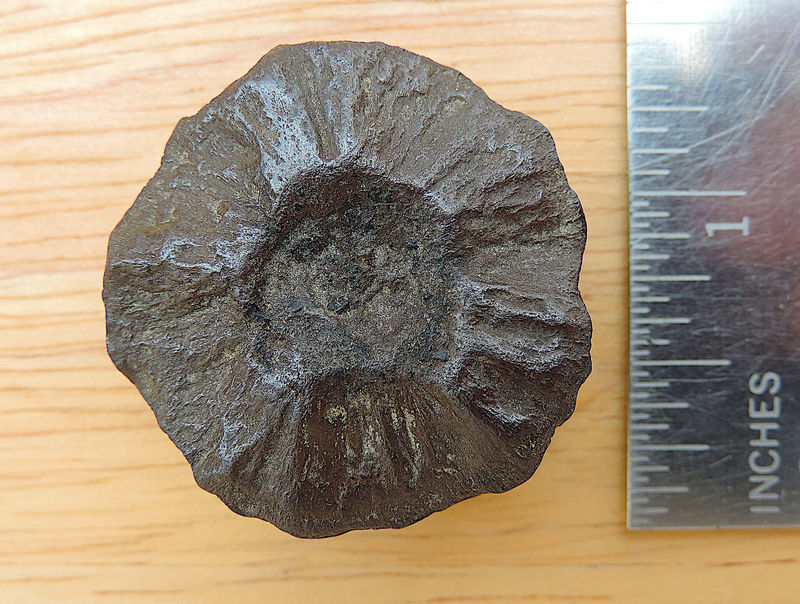
|
| Mineral: | ? |
| Dimensions: | 3.3 cm |
| Description: |
|
| Viewed: |
15750 Time(s) |
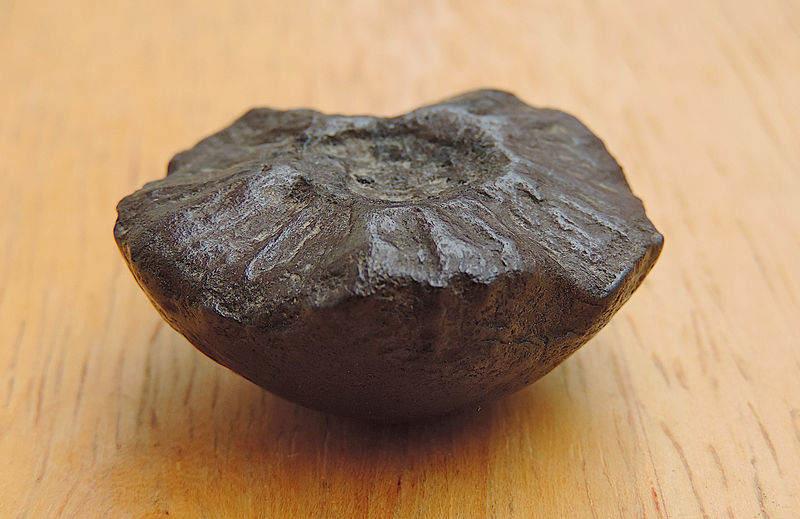
|
|
|
| Back to top |
|
 |
Mathias
Joined: 01 Apr 2018
Posts: 153
Location: Vlodrop


|
 Posted: Feb 10, 2023 11:38 Post subject: Re: Semi-spherical exterior, radiating interior stone Posted: Feb 10, 2023 11:38 Post subject: Re: Semi-spherical exterior, radiating interior stone |
|
|
Its a fossil shell.
Dohmophyllum involutum, Columnariina.
With google its easy to find similar photos.
|
|
| Back to top |
|
 |
kushmeja
Joined: 28 Jul 2014
Posts: 244
Location: New Jersey



|
 Posted: Feb 10, 2023 11:52 Post subject: Re: Semi-spherical exterior, radiating interior stone Posted: Feb 10, 2023 11:52 Post subject: Re: Semi-spherical exterior, radiating interior stone |
|
|
| Looks like a Limonite concretion to me.
|
|
| Back to top |
|
 |
crowinfocus
Joined: 10 Feb 2023
Posts: 11
Location: Zapata


|
 Posted: Feb 10, 2023 12:11 Post subject: Re: Semi-spherical exterior, radiating interior stone Posted: Feb 10, 2023 12:11 Post subject: Re: Semi-spherical exterior, radiating interior stone |
|
|
| Mathias wrote: | Its a fossil shell.
Dohmophyllum involutum, Columnariina.
With google its easy to find similar photos. |
That was quick!
Thanks for your keen observation.
Michael
|
|
| Back to top |
|
 |
James Catmur
Site Admin

Joined: 14 Sep 2006
Posts: 1479
Location: Cambridge



|
 Posted: Feb 10, 2023 12:40 Post subject: Re: Semi-spherical exterior, radiating interior stone Posted: Feb 10, 2023 12:40 Post subject: Re: Semi-spherical exterior, radiating interior stone |
|
|
I agree
| kushmeja wrote: | | Looks like a Limonite concretion to me. |
|
|
| Back to top |
|
 |
SteveB
Joined: 12 Oct 2015
Posts: 239
Location: Canberra


|
 Posted: Feb 10, 2023 12:49 Post subject: Re: Semi-spherical exterior, radiating interior stone Posted: Feb 10, 2023 12:49 Post subject: Re: Semi-spherical exterior, radiating interior stone |
|
|
| iron concretion was my gut but non magnetic limonite is close enough.
|
|
| Back to top |
|
 |
Linus
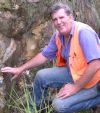
Joined: 06 Nov 2015
Posts: 61
Location: Tucson


|
 Posted: Feb 10, 2023 14:25 Post subject: Re: Semi-spherical exterior, radiating interior stone Posted: Feb 10, 2023 14:25 Post subject: Re: Semi-spherical exterior, radiating interior stone |
|
|
| I agree - fossil. Most all concretions form concentric rings, the radial pattern is not at all typical of a concretion.
|
|
| Back to top |
|
 |
Pete Richards
Site Admin
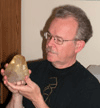
Joined: 29 Dec 2008
Posts: 846
Location: Northeast Ohio



|
 Posted: Feb 10, 2023 16:33 Post subject: Re: Semi-spherical exterior, radiating interior stone Posted: Feb 10, 2023 16:33 Post subject: Re: Semi-spherical exterior, radiating interior stone |
|
|
Some armchair exploration is helpful in choosing between these two proposals.
First, the object is a piece of a sphere. We can get a rough estimate of the density from the information given. A diameter of 3.3 cm produces a sphere with a volume of 18.8 cubic centimeters. This is a partial sphere, somewhat less than 50% of it. I calculated volumes of 30%, 40%, and 50% of the sphere. There is an error here, because if the amount present is less than half the sphere, the true diameter is greater than 3.3 cm. But I plow on. Given the stated weight of the object, converted to grams, we get estimated specific gravities of
50% 3.32
40% 4.15
30% 5.53
Correcting the error in volume estimate would reduce the s.g. estimates for 40% and more so for 30%, but not to lower than the 50% estimate. My guess is that the actual object is less than 40% of the sphere, so the s.g. is perhaps between 4.0 and 4.5 or so.
A fossil should be mostly calcite, with a specific gravity of 2.7.
Pure goethite has a s.g of 4.3; the s.g. of a limonite concretion is likely to be somewhat lower.
The estimated specific gravity favors the interpretation that this is goethite/limonite, and the shape could be expected of a partial concretion.
While the exposed cross section of this object has a radial aspect and a central depression as do many solitary corals, there is none of the detail of septae etc that I would expect of a coral. The bottom has no particular resemblance to the outside of a solitary coral, either in texture or in shape.
The particular genus proposed, Dohmophyllum, is a Devonian (Paleozoic) fossil. But the area where it was found is part of the Gulf of Mexico coastal plain, with sedimentary rocks of the Eocene Period (Cenozoic), hundreds of millions of years later. According to the map I consulted, no Devonian rocks crop out in the entire state of Texas.
Mathias' suggestion is creative and useful in reminding us not to overlook biological origins for mystery objects like this one, but in this case the evidence favors the concretion. Until someone comes up with another possibility! (No, it's not a meteorite).
_________________
Collecting and studying crystals with interesting habits, twinning, and epitaxy |
|
| Back to top |
|
 |
Linus

Joined: 06 Nov 2015
Posts: 61
Location: Tucson


|
 Posted: Feb 10, 2023 17:15 Post subject: Re: Semi-spherical exterior, radiating interior stone Posted: Feb 10, 2023 17:15 Post subject: Re: Semi-spherical exterior, radiating interior stone |
|
|
oh come now, fossils can easily be preserved by silica (corals in the Horquilla Formation in Southern Arizona, petrified wood; and brachiopods on the Colorado Plateau; I have seen them preserved as well by baryte; and smithsonite (Bisbee).
see on the web: "safossils. com/rugosecoral1010small. jpg" of a silicified horn coral cross section.
|
|
| Back to top |
|
 |
Pete Richards
Site Admin

Joined: 29 Dec 2008
Posts: 846
Location: Northeast Ohio



|
 Posted: Feb 10, 2023 17:35 Post subject: Re: Semi-spherical exterior, radiating interior stone Posted: Feb 10, 2023 17:35 Post subject: Re: Semi-spherical exterior, radiating interior stone |
|
|
No question that fossils can be preserved by replacement by all kinds of minerals, silicification being the most common, with the possible exception of pyritization (which would be pretty obvious). Silica, however, has a specific gravity of 2.67, lower than calcite.
Replacement by exotic substances like baryte certainly does occur, but rarely. I have seen fossil molds in sphalerite. I found a brachiopod at Mont Saint-Hilaire that was replaced by pectolite and a few other minerals, well enough preserved that it could probably have been identified to genus or at least family by a Silurian brach expert. But I hardly think these oddities are at play here.
The age discrepancy also remains. If this is not a Devonian solitary coral, what is it?
_________________
Collecting and studying crystals with interesting habits, twinning, and epitaxy |
|
| Back to top |
|
 |
Linus

Joined: 06 Nov 2015
Posts: 61
Location: Tucson


|
 Posted: Feb 10, 2023 17:54 Post subject: Re: Semi-spherical exterior, radiating interior stone Posted: Feb 10, 2023 17:54 Post subject: Re: Semi-spherical exterior, radiating interior stone |
|
|
| I guess the real question is, "was this transported? or found in outcrop"? judging from all the eocene sediments surrounding zapata, tx and the pronounced rounding and abrasion of the item I would suggest that although found there it may have been transported a significant distance. Perhaps crowinfocus can comment exactly on the nature of his find?
|
|
| Back to top |
|
 |
Amir Akhavan
Joined: 01 Dec 2009
Posts: 95
Location: Hamburg


|
 Posted: Feb 10, 2023 18:54 Post subject: Re: Semi-spherical exterior, radiating interior stone Posted: Feb 10, 2023 18:54 Post subject: Re: Semi-spherical exterior, radiating interior stone |
|
|
I agree with those who say very likely limonit(ized) concretion.
I used to find many pyrite (often called marcasite) concretions in a limestone quarry that looked like these.
Interestingly they had a grainy, soft multicrystalline core, and radially grown, hard shell, pretty much in the proportions seen in the specimen on the photo.
When you split them, the core would disintegrate very quickly and leave the shell.
If something like that gets limonitized, it would look much like the specimen in question.
_________________
Amir C. Akhavan, Hamburg, Germany |
|
| Back to top |
|
 |
Linus

Joined: 06 Nov 2015
Posts: 61
Location: Tucson


|
 Posted: Feb 10, 2023 20:16 Post subject: Re: Semi-spherical exterior, radiating interior stone Posted: Feb 10, 2023 20:16 Post subject: Re: Semi-spherical exterior, radiating interior stone |
|
|
Cretaceous age fossil corals are known from the San Antonio area of south Texas, and from north of Nuevo Laaredo, both approximately 200 kms from Zapata.I have enclosed a cross section drawing of a Cretaceous coral from Australia - note the amorphous center and the outwards radiating septa ...
| Mineral: | fossil coral |
| Locality: | | Australia |  |
|
| Description: |
| thanks to: Jell, Cook, and Jell (2011): Australian Cretaceous Cnidaria and Porifera |
|
| Viewed: |
15441 Time(s) |
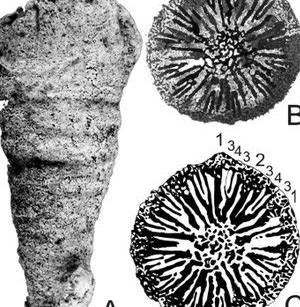
|
|
|
| Back to top |
|
 |
Mathias
Joined: 01 Apr 2018
Posts: 153
Location: Vlodrop


|
 Posted: Feb 11, 2023 00:09 Post subject: Re: Semi-spherical exterior, radiating interior stone Posted: Feb 11, 2023 00:09 Post subject: Re: Semi-spherical exterior, radiating interior stone |
|
|
Hi doesn't this fossil shelll look similar?
| Description: |
|
| Viewed: |
15405 Time(s) |
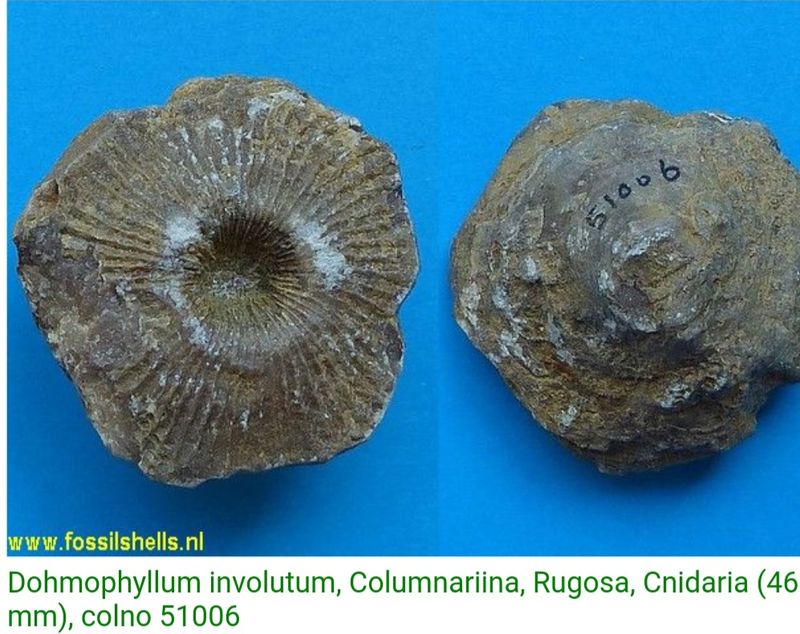
|
|
|
| Back to top |
|
 |
crowinfocus
Joined: 10 Feb 2023
Posts: 11
Location: Zapata


|
 Posted: Feb 11, 2023 00:14 Post subject: Re: Semi-spherical exterior, radiating interior stone Posted: Feb 11, 2023 00:14 Post subject: Re: Semi-spherical exterior, radiating interior stone |
|
|
To All: I am delighted in your fervent explorations of the possibilities.
I know nothing. And the Charlie Brown peanut gallery can only offer that it was found in desert sand with nothing remotely resembling it lying about, or I would have drug that home too. My pockets were always full of rocks. I have never seen an outcropping of this nature in this area, nor have I encountered anything like it, though there are several hundred square miles of desert I have not explored.
My best observation is that it has been tumbled a lot, as in transported a great distance. All surfaces are incredibly smooth, yet densely strong enough to maintain the ridges. I have picked at it with a steel tool and never left a mark.
I do hope together you can solve this mystery.
|
|
| Back to top |
|
 |
|





